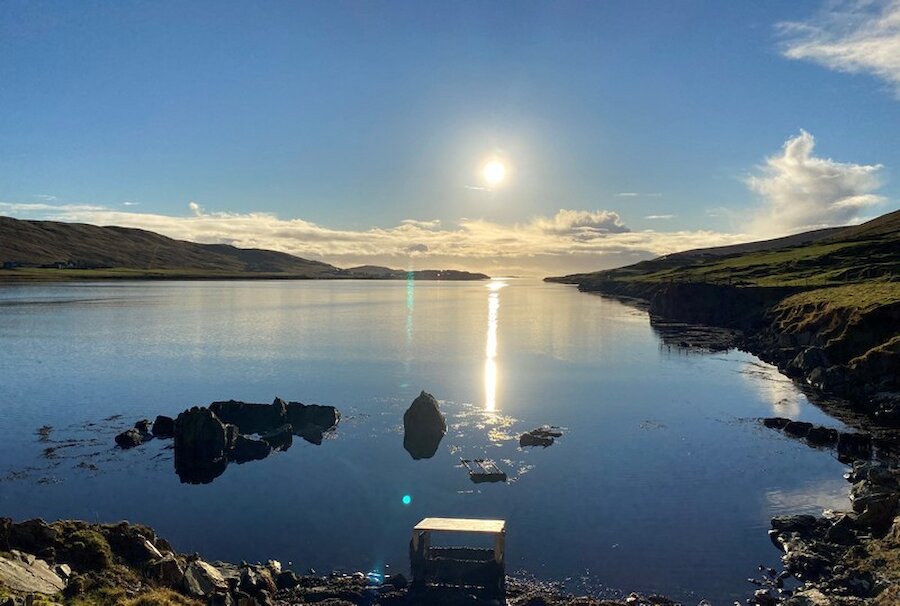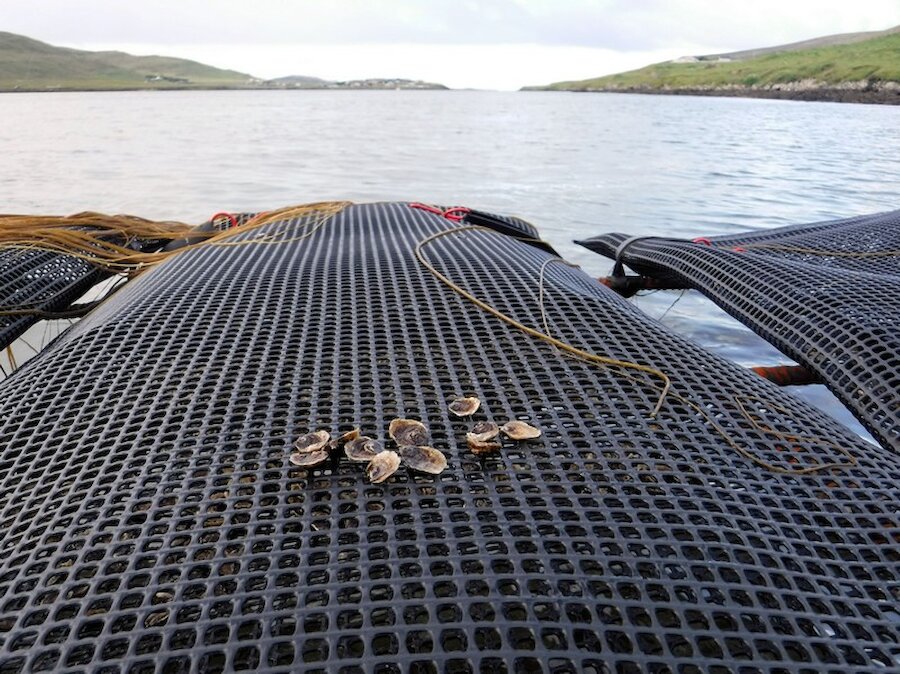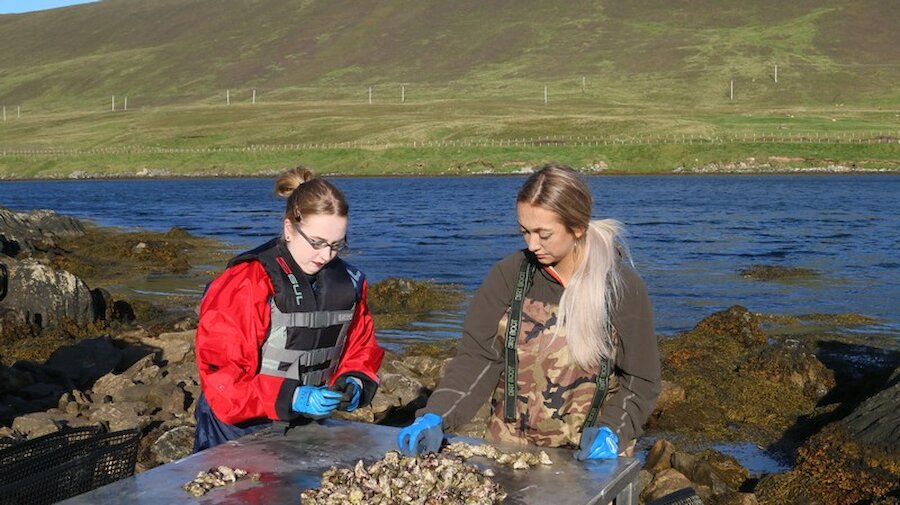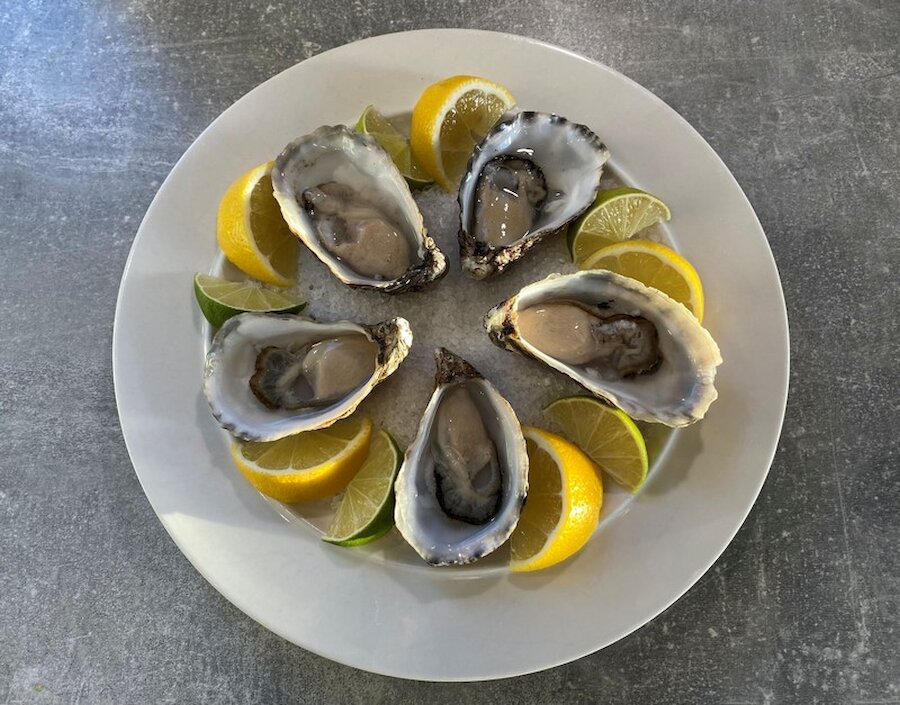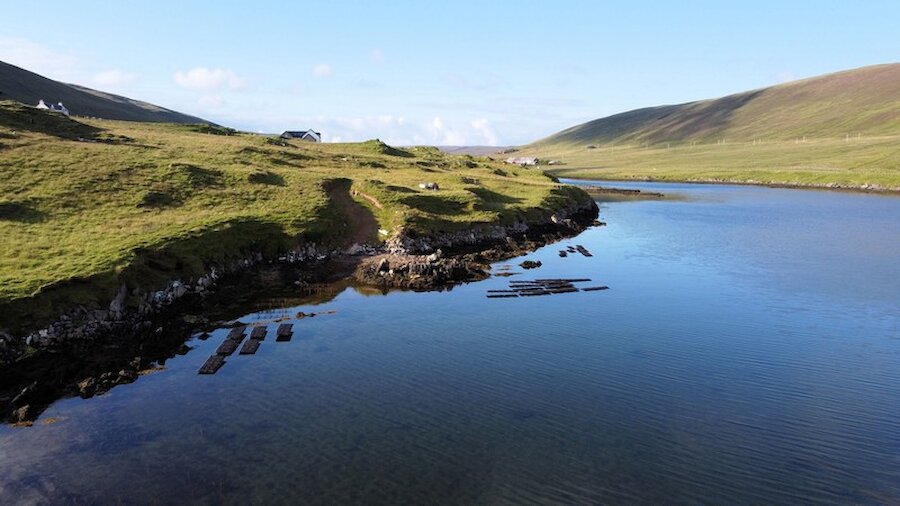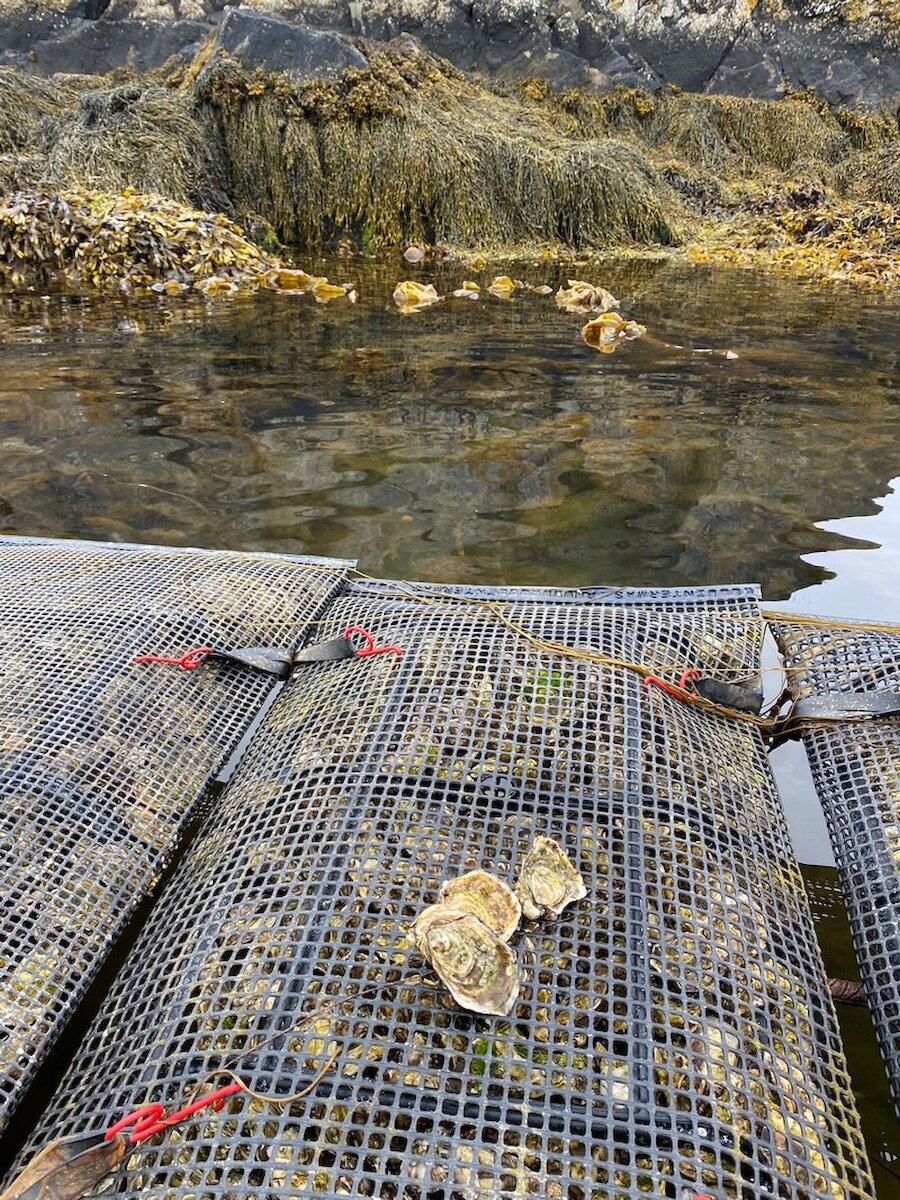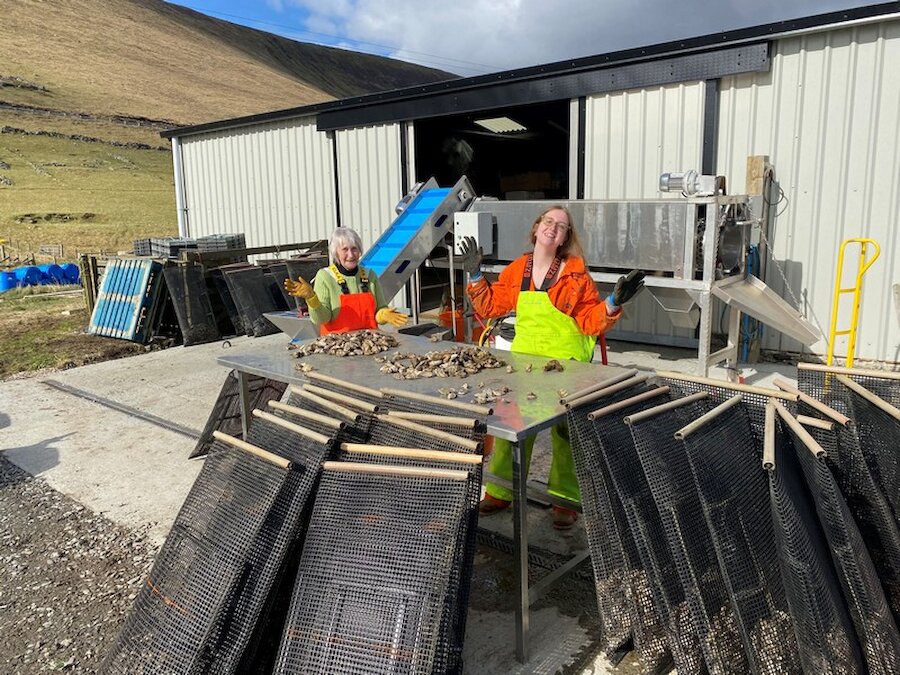Over the years, Winston tried eating oysters in many places. In Europe and the UK, the oysters that are usually farmed are the Pacific type. However, he was also interested in growing the European native oyster, also native to Shetland.
“The holy grail was to get the native oyster to release spat in its natural surroundings; so, when I got back, I looked into it a bit more and applied for a works licence. Once I received that, about 16 years ago, there were issues with getting spat of good quality, so we paused our plans as we didn’t want to introduce potential diseases. And working life had its effect as well, but I thought now or never, so I started a trial in 2020 with around 15,000 oysters, while working from home during the pandemic.
“We have over half a million in the water now, a mixture of native and Pacific oysters. We have a small amount ready, but we sold some at Christmas and the other half we’ll look to go in early February, for Valentine’s Day.”
Once the water temperature increases in the spring, more of the oysters will reach maturity. “Hopefully, by the time the summer season and the Tall Ships arrive, they’ll be ready."
The oysters grow naturally in the sea, and Winston has arranged the growing area so that it’s in the intertidal zone. “That’s one of the issues in Shetland and why it’s more difficult to grow oysters here – we don’t have the rise and fall of tide that they have south. You could go in with a tractor south, but I was working with a small skiff; I proved that worked, although it’s more effort, so we built a pontoon. We just push that out and we gain access that way.”

